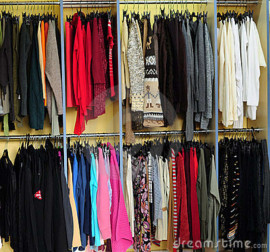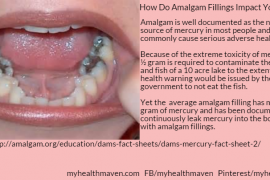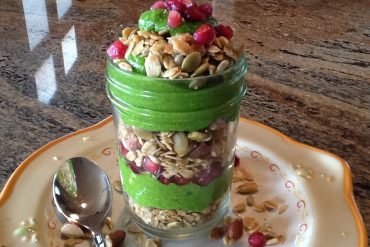My 3 year old grand niece had a horrible reaction to a dress she was wearing, for a dance class. Minutes after putting it on, she had horrible welts on her body wherever the fabric touched her skin. What was the cause? I don’t know yet. **Some questions I asked her mom to look into were: Was the dress imported? Was it dry cleaned? Was it dyed? Was it home made? If so, what is the dress made of? What detergent was used? Did the dress maker use fabric softener or dryer sheets? If hung outside to dry, are any neighbors using pesticides or herbicides that may have gotten on the clothes. The number of factors to consider can be overwhelming, but to find the answers, you have to look at all the possibilities.
The fact of the matter is that finding “safe” clothing can be a big issue for people with MCS (Multiple Chemical Sensitivity) and others who are sensitive. Some individuals may suffer from vague, irregular symptoms such as nausea, headaches, rashes, hives and burning skin. The symptoms seem to come and go without a regular pattern, which leaves people to wonder what is going on. A basic factor for highly sensitive people may be that they are reacting to the clothes they are wearing. If you’re wearing synthetic clothes, they may be contributing to your overall level of toxicity.
So my question is have you considered that your clothes may be making you sick? You may after learning more about synthetic fabric.
**For those of you who inquired, the cause of the problem was dye.
How Synthetic Fabric Is Made
Synthetic fabrics used in clothing, linens and furniture fabrics are treated with chemicals during and after processing. These chemicals have an impact on the user and the environment. The base for most synthetic fabrics is a liquid made from coal, oil, or natural gas. The liquid is forced through the fine holes of a nozzle, called a spinneret. As the liquid emerges from the holes, it is cooled so that it solidifies to form tiny threads. These threads are woven together to make fabric. To make these clothes more durable Perfluorochemicals (PFCs) including teflon are added to fabric to offer wrinkle and stain resistant qualities.
Consider these facts:
•Synthetic materials such as acrylic, nylon, and polyester are made from chemicals such as thermoplastic, which out gas plastic molecules whenever they are heated. When you dry synthetic clothes in a clothes dryer you are out gassing these chemicals into your home and the environment. If you wear synthetic clothes, your body heat also releases these chemicals into the air and the chemicals are absorbed by your skin. When you wear wrinkle free clothes you’re breathing in plastic and formaldehyde.
•Perfluorochemicals (PFCs), including the nonstick additive teflon, are increasingly being added to synthetic fabrics for durability, stain resistance, and wrinkle resistance. While many people appreciate no –iron or wrinkle free clothes, they are likely unaware of the hazardous chemicals used to create that effect.
• Perfluorochemicals (PFCs) are very persistent in the environment—they have been found in the blood of animals and human beings all over the world. (2) Researchers have serious health concerns regarding PFCs, including the risk of cancer. Like many other toxins in the home, PFCs accumulate in your body over time. PFCs cause liver and kidney damage in laboratory animals, as well as reproductive issues.
•Formaldehyde is often added to clothing to prevent material from shrinking. Since it is applied with heat during processing it is permanently attached to the fibers. It can’t be washed out. Formaldehyde may serve as an irritant to onset asthma and asthma symptoms (4) According to EU classification; formaldehyde is a class 3 carcinogen. (5)
•Rayon is made from wood pulp that is treated with caustic soda and sulphuric acid.
• Clothing that is flame resistant, such as children’s pajamas, have been treated with flame retardant, and emit formaldehyde gas.
•Cotton polyester blends are commonly treated with formaldehyde and softened with chemicals such as ammonia. (3)
•There are two primary forms of polyester, PET (polyethylene terephthalate) and PCDT (poly-1, 4-cyclohexylene-dimethylene terephthalate). Most polyester is also manufactured with antimony, a carcinogen that is toxic to the heart, lungs, liver, and skin. (6)
•Many textile dyes and bleaches contain toxic heavy metals such as cadmium and chromium. (3)
Natural Options
Natural and organic fabrics are a more environmentally conscious choice. Natural and organic clothes are less likely to trigger allergic reactions and skin irritation. If the cost of these clothes is prohibitive, be sure to check thrift shops, yard sales or consider a clothing swap with friends and neighbors.
Look for clothing made of natural fibers such as:
Hemp
Bamboo
Organic Cotton
Wool
Silk
Linen
Other Factors To Consider
If you are experiencing rashes, hives, itching, welts, redness or other negative reactions to your clothes consider the following:
Try a different laundry detergent (one that is perfume and dye free)
Try cutting down on the amount of laundry soap you use, there may be residual soap in your clothes and bedding causing skin irritation.
Eliminate using fabric softener. Learn more by clicking here.
Eliminate dryer sheets. Learn more by clicking here.
List of Synthetic Fabrics
A
Acrylic fiber
Aramid
Art silk
Azlon
B
Bamboo fibre
Ban-Lon
Basalt fiber
British Celanese
C
Carbon (fiber)
CarbonCast
Celliant
Cordura
Crimplene
Cuben Fiber
D
Darlexx
Dynel
E
Elasterell
G
Glass fiber
Gold Flex
I
Ingeo
Innegra S
K
Kevlar
Kevlar KM2
L
Lastol
Lyocell
M
M5 fiber
Metallic fiber
Microfiber
Modacrylic
N
Nomex
Nylon
Nylon 6
Nylon 6-6
O
Olefin fiber
P
PLGA
Poly(p-phenylene sulfide)
Polyacrylonitrile
Polybenzimidazole fiber
Polydioxanone
Polyester
P cont.
Polylactic acid
PrimaLoft
Q
Qiana
QMilch
R
Rayon
Retroglo
S
Saran (plastic)
Paul Schlack
Sorona
Spandex
T
Tactel
Taklon
Technora
Thinsulate
Twaron
U
Ultra-high-molecular-weight polyethylene
V
Vectran
Vinylon
Vinyon
Viscose
Z
Zylon
References:
(1) Home Safe Home by Debra Lynn Dadd
(3) http://archive.audubonmagazine.org/audubonliving/audubonliving0911.html
(5) http://www.greenmedinfo.com/toxic-ingredient/formaldehyde
(6). https://oecotextiles.wordpress.com/?s=antimony+in+polyester+fabric
List of Synthetic Fabrics








